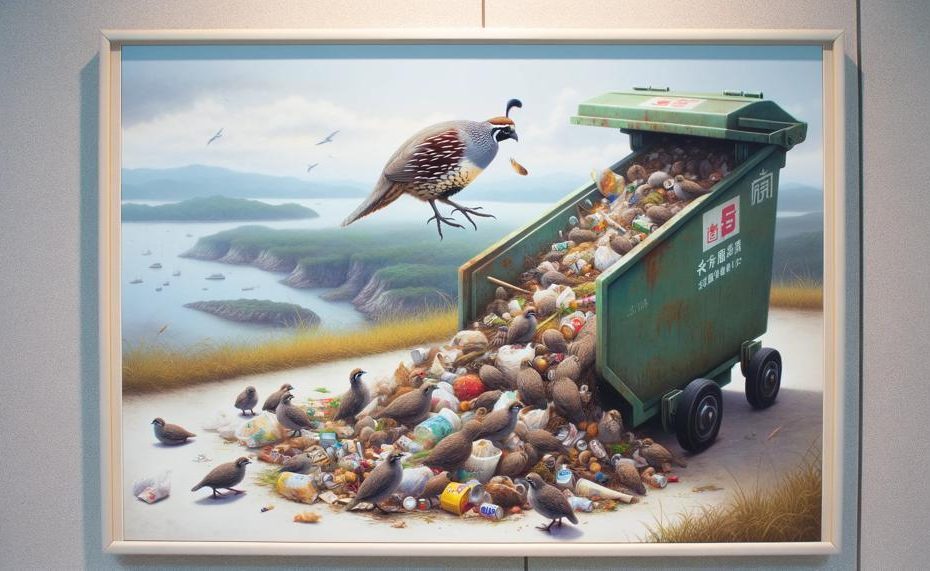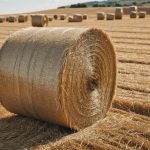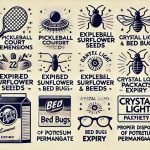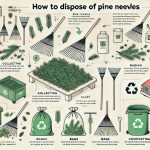If you’re in the loop with these feathered friends, you’ll know that quail keeping can be rewarding, but it also comes with the responsibility to manage the byproducts they produce. In this article, we’re going to uncover the nitty-gritty of turning a potential nuisance into a golden opportunity for your garden and beyond.
As we navigate through the ins and outs of waste management, you’ll discover that what comes out of your quail coop is more than just refuse—it’s a resource waiting to be harnessed.
So, how to dispose of quail waste properly?
Composting is a common way to dispose of solid poultry waste, including quail manure, on-farm. To create a balanced compost pile, mix the manure with other organic materials, such as straw, leaves, or kitchen scraps.
The simplest and most common method is to create a pile or windrow of carbonaceous material into which the solid poultry waste is added. You can also mix hatchery waste with wood shavings to reduce the moisture then compost.
The compost can be used as a fertilizer. For example, you can dig up a hole in the garden, fill it up with quail poop, and add a little bit of soil on top. After a week or two, you can use the spot to plant something over there.
Other ways to manage poultry waste include drying or commercial organic fertilizer production.
By the end of this article, you’ll be equipped with the knowledge to turn a potentially messy problem into a solution filled with benefits. Let’s spread our wings and soar into the world of responsible quail waste disposal.
Contents
- 1 Is the Waste of Quail Beneficial to Gardens?
- 2 Is It Possible to Utilize the Waste from Quail as Fertilizer?
- 3 What Is the Quantity of Quail Waste Required to Make Fertilizer?
- 4 Different Ways to Use Quail Waste as a Fertilizer
- 5 Advantages of Using Quail Waste as a Fertilizer
- 6 What Is the Duration Required for Composting Quail Waste?
- 7 Tips for Using Quail Manure Safely
- 8 What Is the Method for Recycling Quail Waste?
- 9 Conclusion
Is the Waste of Quail Beneficial to Gardens?
Quail waste is indeed a boon for gardens. Properly treated, it enriches soil with a high water content and nutritious density, supporting robust plant growth. Let’s sift through the specifics:
Composting Quail Waste
Composting quail waste before use is non-negotiable. It allows for the safe transition of the waste into a plant-friendly format by balancing nitrogen-rich greens with carbon-rich browns.
Nutrient Profile of Quail Manure
Quail manure trumps chicken droppings in several respects, including a rich mix of nutrients that plants crave and the added bonus of soil pathogen suppression.
Longevity and Utilization
Well-stored quail waste remains an effective fertilizer for up to three years. This longevity ensures gardeners can reap the benefits over multiple growing seasons.
Application Techniques
Whether applied directly, mixed into compost, or liquefied, quail waste provides versatility. However, moderation is key given its high nitrogen levels.
Compost Ratios and Techniques
A 25:1 ratio of browns to greens is ideal for composting. Additionally, employing room-temperature water and avoiding overexposure ensures a successful decomposition process.
The Curing Phase
Post-composting, a crucial curing phase of 2-6 months guarantees the manure is safe and beneficial for garden application.
Direct Benefits to Gardens
| Nutrient Boost | Quail waste is crammed with nutrients that bolster plant growth and soil fertility. |
| Soil Health | The unique composition helps combat soil pathogens, promoting a healthier garden ecosystem. |
| Environmental Gain | Using quail waste supports sustainable gardening practices, reducing reliance on chemical fertilizers. |
Safety and Regulations
It’s crucial to stick to guidelines when composting quail waste to avoid plant toxicity and ensure an eco-friendly approach.
Availability
Whether one opts for a DIY composting setup or purchases pre-packaged quail waste, it’s readily accessible for all garden enthusiasts.
Is It Possible to Utilize the Waste from Quail as Fertilizer?
Yes, quail waste can be turned into a beneficial fertilizer. Here’s the scoop on how and the perks of using it.
Conversion to Compost
Raw quail droppings are potent, loaded with nitrogen, but they’re too strong to apply directly. They can cause more harm than good, scorching your plants. The trick is to compost them. You mix these droppings with carbon-rich materials, like dead leaves or straw, and let the pile cook.
Over time, the composting process mellows the manure, creating a balanced, nutrient-rich compost.
Application Methods
Once the compost is mature, it’s all systems go. You can till it into your garden beds, giving your veggies a boost, or mix it with your potting soil for container-grown blooms.
Just remember, moderation is key; you don’t want to overwhelm your plants.
Benefits Galore
The benefits? Oh, they’re plentiful. Your plants will thank you with vigorous growth, and you’ll notice fewer weeds muscling in. The compost helps the soil retain moisture too, which means less watering on your part.
Now, for a quick glance at the details:
| Nutrient | Benefit | Application |
|---|---|---|
| Nitrogen | Boosts plant growth | Compost mix |
| Weed suppression | Less competition for plants | Top dressing |
| Moisture retention | Reduces watering needs | Soil amendment |
What Is the Quantity of Quail Waste Required to Make Fertilizer?
Quail droppings are a potent source of nourishment for your garden’s flora, crammed with nitrogen and vital nutrients that plants like corn and tomatoes are particularly fond of.
While its aroma isn’t as pungent as other manures, heed must be taken to compost it correctly, or you risk scorching your greens with the intense nitrogen.
Composting Quail Manure
Before you can harness this waste as fertilizer, it’s crucial to compost it to moderate the nitrogen levels. This process typically spans 6-8 weeks, depending on the climate’s temperature and moisture.
Calculating the Waste Needed
The quantity of quail waste required is contingent on the composting setup and the size of your garden. The table below provides a rudimentary guideline for small-scale gardeners:
| Garden Size (sq ft) | Raw Quail Waste (lbs) | Composted Quail Waste (cubic ft) |
| 100 | 20 | 2-3 |
| 200 | 40 | 4-6 |
| 400 | 80 | 8-12 |
Note: These figures are estimates and should be adjusted based on specific garden conditions.*
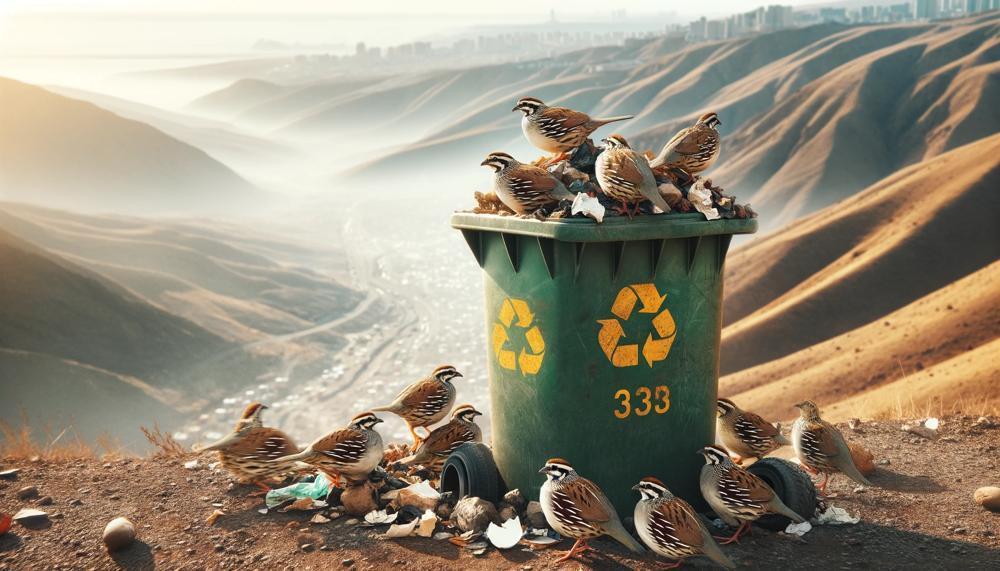
Different Ways to Use Quail Waste as a Fertilizer
Turning quail waste into a nutrient-rich and eco-friendly fertilizer can be achieved through several methods. Here are some of the most effective techniques:
| Method | Description | Benefits |
|---|---|---|
| Composting | Layering waste with carbon-rich materials and allowing it to decompose. | Creates a nutrient-rich soil amendment, neutralizes pathogens. |
| Liquid Fertilizer | Mixing waste with water and fermenting. | Provides quick nutrient uptake, easy to apply. |
| Direct Application (Cured) | Spreading cured manure over soil. | Direct nutrient source to plants, improved soil structure. |
| Industrial Processing | Heating waste to high temperatures. | Sanitizes waste, kills weed seeds and pathogens. |
For those keen on enriching their soil with quail waste, these methods offer a range of options to suit different garden setups and preferences.
Advantages of Using Quail Waste as a Fertilizer
Quail waste, when used sensibly, serves as a dynamite amendment for soil, injecting it with a cocktail of nutrients and beneficial microbes. These microscopic allies join forces with plant roots to boost growth and yield.
Nutrient Profile
Quail droppings are a treasure trove of nitrogen, phosphorus, and potassium – the core building blocks of any plant’s diet. Here’s how they contribute:
- Nitrogen is akin to a protein shake for plants, fuelling leaf and stem development.
- Phosphorus stokes the fires of root growth, blooming, and fruiting.
- Potassium shores up a plant’s immune system and fine-tunes its water use.
Soil Structure and Microbial Health
Beyond the big three, quail waste is a smorgasbord for soil microbes. These minute critters hustle to decompose organic matter, which, in turn, improves soil structure. This means better aeration and water retention, key factors for thriving plants.
Usage and Disposal for Peak Effectiveness
Proper disposal and application are crucial to harness the full potential of quail waste. Here’s a guide to using quail droppings without a hitch:
| Method | Process | Benefits |
| Composting | Combine with carbon-rich materials and let it break down. | Neutralizes pathogens and enriches the soil with humus. |
| Liquid Fertilizer | Dilute with water and apply to the soil. | Instantly available nutrients for plants. |
| Direct Application | Use cured manure as a mulch or side-dress. | Slow-release nutrients and improved moisture retention. |
What Is the Duration Required for Composting Quail Waste?
The duration required for composting quail waste generally spans from three to six months. This timeframe can vary based on several factors, including the frequency of turning the pile and the ambient conditions.
Key Steps in Composting Quail Waste:
| Stage | Activity | Duration |
| Initiation | Collect waste, mix with carbon sources | Day 1 |
| Maintenance | Turn the pile for aeration | Weekly (3-6 months) |
| Monitoring | Check temperature | Daily (during active phase) |
| Curing | Stabilize compost | 1-2 months |
Keep in mind, patience is your ally here; rushing the process can lead to unripe compost, which might harm rather than help your plants. You’ll know the compost is ready when it’s dark, crumbly, and smells like earth.
Tips for Using Quail Manure Safely
Tips for safely using quail manure hinge on its careful handling and transformation into a boon for your garden. Here are your go-to pointers:
Daily Disposal
Keep things spick and span by removing quail droppings daily from their living quarters. A litter box or tray decked out with sand or wood shavings makes this task a doddle.
Routine Cleaning
A regular scrub-down of the litter receptacle with a mixture of hot water and bleach ensures a pristine environment, important for both the quail and your peace of mind.
Composting Know-How
Transform quail waste into black gold for your garden by composting. Balance is key; mix in straw and leaves to keep the nitrogen in check.
| Composting Step | Materials Needed | Outcome |
| Layering | Quail manure, straw, sawdust | A balanced compost mix |
| Curing Time | Patience | Ripe compost in 2-6 months |
| Application Method | Gloved hands or tools | Nutrient-rich soil |
Liquid Gold
For an instant plant pick-me-up, mix quail droppings with water and treat your plants to a nitrogen-rich feast.
Storage Savvy
Not ready to use it straight away? No bother. Store your composted quail manure for up to three years, and it’ll still do the trick.
Industrial Heat Treatment
If you’re going big scale, heat-treated quail manure is a sure bet for annihilating any lurking nasties and boosting those beneficial properties.
Remember, quail manure ain’t just any old waste; it’s a powerhouse of nutrients. Treat it right, and your greenery will thank you tenfold.
What Is the Method for Recycling Quail Waste?
Quail waste, a veritable trove of nutrients, can be a boon for your garden, yet a bane if mishandled. Here’s the lowdown on turning those droppings into garden gold without raising a stink:
Composting: The Art of Transformation
Get ready to wrangle that quail waste into composting bins. With a sprinkle of straw and leaves, you’ll cook up a nutrient-rich concoction.
Remember, patience is key – give it time to decompose.
| Step | Process | Benefits |
| 1 | Collect the quail manure | Prevents build-up and pest attraction |
| 2 | Mix with carbon-rich materials (straw, leaves) | Enhances decomposition and balances nitrogen |
| 3 | Turn the pile regularly | Encourages aeration and speeds up composting |
Liquid Fertilizer: A Potent Brew
Fancy a bit of alchemy? Transform quail droppings into a potent liquid fertilizer. Dilute it well and apply it to your plants – they’ll thank you with vigorous growth.
Direct Application: A Delicate Matter
If you’re bold, apply quail manure directly to the soil. But be cautious, apply it sparingly and at just the right season to sidestep over-fertilization woes.
Industrial Heat Treatment: For the Producers
Got heaps of quail waste? Consider an industrial heat treatment to sanitize and break it down. It’s a swift solution for larger operations.
Burn Baby Burn: The Quick Fix
If composting’s not your thing, incineration is a swift way to clear the decks. But mind the emissions and check with your local regulations first.
Pest Prevention: Quick Storage and Disposal
Don’t dilly-dally. Store quail waste securely and dispose of it swiftly to keep those pesky intruders at bay.
Mix and Match: The Organic Cocktail
Why not mix quail waste with other animal droppings? You’ll concoct an organic mixture that’ll have your veggies bursting with life.
Remember, glove up or grab a tool when handling this stuff – safety first, folks. And if you’re sitting on a mountain of manure, three years is your storage cap.
Conclusion
It’s evident as we come to the conclusion of our exploration of creative and environmentally responsible methods for dealing with quail excrement that this often disregarded byproduct is really beneficial for both gardeners and the environment. We’ve covered the A to Z of managing quail waste, from the nutrient-rich profile of quail dung that exceeds even that of chicken droppings, to the crucial composting methods that safely turn waste into garden gold.
Hopefully, you are now motivated and prepared to use your quail droppings as a sustainable resource to promote plant development, decrease soil pathogens, and improve the ecology in your garden. Recall that the composting process is crucial as it not only mitigates any plant toxins but also improves the nutritional availability of the manure. When waste materials rich in carbon and waste materials high in nitrogen are properly balanced, the composting process will produce a product that is safe and effective for your plants, benefiting them for many years to come.
Always be aware of local laws and regulations to make sure your operations are both ethical and sustainable. Remember that the guiding concepts of sustainable farming are still the same, regardless of your level of experience or scale: moderation, balance, and dedication to sustainable techniques.
The use of quail manure in gardening involves more than simply disposing of waste; it involves adopting a full-cycle ecological strategy that improves soil quality, strengthens plants, and reduces carbon emissions.
